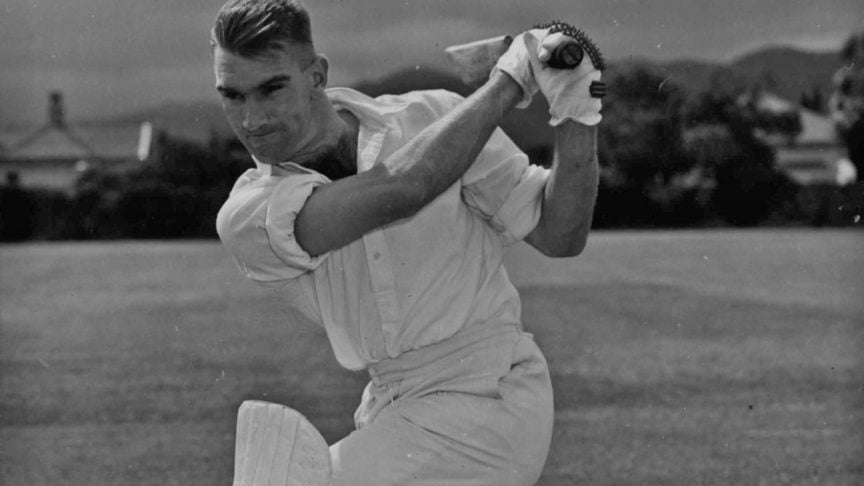John Reid, the former New Zealand captain, who died last week at the age of 92, was one of the outstanding all-round cricketers of his generation. During his long international career he dominated New Zealand cricket to an extraordinary degree. At one point, he held the New Zealand Test records for scoring most runs, most centuries, taking most wickets, holding most catches, playing in most matches, and captaining most often. He appeared in 58 consecutive Tests, captaining in 34 of them. At the start of his career, when he toured England as a 20-year old under Walter Hadlee, New Zealand were not a bad side. Martin Donnelly was, with Australian Neil Harvey, the best left-handed batsman in the world. This was a rare peak (they drew that four-match series of four-day Tests 0-0). By the time England toured New Zealand in 1954-55, only two of their players, according to Brian Statham, would have got into an English county side, Reid and Bert Sutcliffe; they, the great fast bowler conceded, were world class.
Successes were rare. When they came, however, Reid was invariably a big part of it. In 1955-56 in the fourth Test against West Indies at Eden Park (the visitors had won the first three) New Zealand gained their first Test victory. They had had to wait 26 years and 45 matches. Reid, in his third match as captain top-scored in the match, being out hit wicket for 84 in the first innings. New Zealand won by 190 runs.
They had to wait another five years for their next successes, on the tour of South Africa in 1961-62. South Africa won the first Test, in Durban, by 30 runs, and the second, at The Wanderers, was drawn (Reid 75 not out in the second innings). New Zealand won the third, at Newlands, by 72 runs. Reid made 92, and Zin Harris a century as they made 385. South Africa were bowled out for 190. Their second innings target was 408 and they managed 335. Leg-spinner Jack Alabaster took eight wickets in the match, and Reid two for 21 in 14.2 overs in that second innings.
South Africa won the fourth Test, at The Wanderers, by an innings. Reid, however, scored 60, out of 164, in the first innings, and 142 – out of 184 while he was batting, and 249 altogether – in the second. In the first innings he thrashed a ball apparently through the covers at a pace that the South African reporter Louis Duffus said was greater than the normal human eye could keep up with; it was caught by a diving Colin Bland. Reid himself said it was the greatest catch he ever saw.
So New Zealand could still square the series when the teams played the fifth Test in Port Elizabeth. And they did it, bowling South Africa out on the final day to win by 40 runs. In that final innings Reid who had scored 69 in New Zealand’s second innings, took four for 44 in 45 overs. In the series as a whole Reid made more runs than anyone else on either side, 546 at an average of 60.66, and headed New Zealand’s bowling averages too with 11 wickets at 19.72. In the tour as a whole he scored 1,915 runs at 68.39, eclipsing Denis Compton’s record for runs scored in a South African season set in 1948-49. South Africa had been a happy hunting ground for him before. On the 1953-54 tour he became the first player to score a thousand runs and take 50 wickets in a South African season. He scored his first Test century in the third Test of that series at Newlands.
Generally, of course, the team were not doing so well, but Reid was undaunted. He led the side to a challenging five-Test tour against a strong England side in 1958. England won the first four Tests, three by an innings, and one by 205 runs; rain prevented play for much of the fifth, which was drawn. Even Reid struggled in the Tests, but on the tour as a whole he scored 1,429 runs. In the second Test against England in Christchurch in 1962-63, when Fred Titmus and David Larter bowled the home side out for 159, Reid, who had made 74 in the first innings, scored exactly 100 in the second. Reid also enjoyed success in the subcontinent, making two hundreds in India in 1955-56 and one in Pakistan in 1964-65. New Zealand did not play a single official Test against Australia during Reid’s career.
The thing about Reid was that he was simply an incredibly naturally gifted cricketer. He was a tall and immensely powerful individual. He had a perfect eye, quick and confident footwork and all the shots, being a particularly strong driver and a fierce hooker and puller. Playing for Wellington against Northern Districts at the Basin Reserve in 1963 his innings of 296 contained 15 sixes. This was a record that stood till Andrew Symonds hit 16 in an innings for Gloucestershire against Glamorgan at Abergavenny in 1995. (I’ve been to both grounds; The Basin is bigger.)
He was a brisk medium-pace outswing bowler who could turn to off-cutters when conditions were suitable. He was a brilliant fielder who was perfectly capable of keeping wicket if required. As a captain his main weakness at the start was difficulty in recognising that not everyone had his sublime talent. As he got older he became more patient.
There have been few better judges of a cricketer than the “Sage of Longparish” John Woodcock. His excellent One Hundred Greatest Cricketers, published in 1998, does what it says on the tin. There are two New Zealanders – Richard Hadlee, and John Reid.
One phrase says it all: “the flair of a natural player and the strength of an Olympic weightlifter.”
Share this Post
